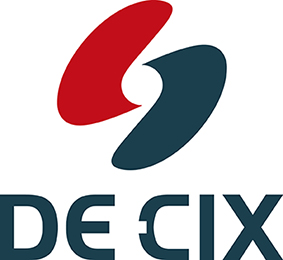The Tellus Project: Giving the Internet an Upgrade
DE-CIX’s Alina Rubina outlines how Tellus is creating a more powerful network infrastructure for the Gaia-X data-infrastructure ecosystem.

© FeelPic| istockphoto.com
Funded by the German state to the tune of 117.4 million Euro, eleven projects are currently developing prototypes for the future European Gaia-X data ecosystem. They are working on business models, cloud platforms, applications and programming interfaces. Only one of the eleven projects deals with the network itself, the lowest level of infrastructure: the Tellus project.
The need for an upgrade
The Internet as we know it is not powerful and reliable enough for many critical and demanding applications. During the Covid-19 pandemic, we saw what happens when significantly more people around the world use data-intensive services. Streaming providers had to temporarily reduce the quality of their video transmissions to prevent the Internet from crashing. This is even more true for advanced applications of the coming data age, such as Industry 4.0, robotics, AI, or telemedicine. It’s not what the Internet was built for.
Industry 4.0 is overwhelming the conventional Internet
Increasingly, Industry 4.0 systems must react in real-time and handle data volumes of a different order of magnitude than before. This requires networks to transmit data not only very quickly but also extremely reliably. However, the Internet only transmits data according to the “best effort principle”. This means that it forwards data as quickly as possible, using the best path currently available. It does its best, but there is no technical guarantee of error-free and reliably fast transmission.
The Tellus project’s solution
The Tellus project aims to solve the problem of unreliable and inconsistent network connectivity by creating a software-based end-to-end solution at the network level. Instead of sending the data via a random connection path on the Internet, Tellus Super-Node software calculates a network path based on the technical requirements and sends the data over the optimal connection. This guarantees all of the important technical parameters, e.g., latency, bandwidth, security. However, three more things are required for end-to-end connections at the network level: standards, market transparency, and automation. Setting up end-to-end network connections still requires a lot of manual effort. The switching and ordering process itself takes time. Finding the best technical and economical solution is also time-intensive. The Tellus project aims to simplify this by providing one contract, one standard process, and little additional communication.
The Tellus Overlay
The Tellus Overlay is the software-based modular structure that the project is creating to make the systems of network providers and cloud platforms interoperable. Setting up end-to-end network connections with guarantees will become much easier and faster. The Tellus software will ensure optimal service selection and find the best offers on the network and cloud layers based on the user requirements.
Network operators and cloud providers must first install the Tellus software on their systems. Each of them represents a virtual node in our network. At the heart of this hierarchical architecture is the Super Node. This is where Tellus software calculates the best routes for each end-to-end network connection and automatically matches user requirements with suitable suppliers. What companies used to do painstakingly by hand, Tellus will now do directly by code command and thus automated. We call this Network as Code.
More data sovereignty within Gaia-X
The Tellus project is Gaia-X compliant and will use the Gaia-X Federation Services (GXFS Germany). Our contribution is to automate access to high-performance data connections and to integrate disparate network and cloud services into an interoperable architecture that will provide the appropriate network infrastructure for future European data ecosystems. Conventional Internet connections will continue to exist; Tellus is the solution for demanding applications where the Internet cannot deliver in terms of latency, bandwidth, security, resilience, dynamics and monitoring.
The project plan
Ten partner companies are working on the Tellus project, with DE-CIX leading the consortium. Mimetik, IONOS and Trumpf are providing critical use cases. Plusserver and Spacenet are contributing their years of experience as cloud service providers, as is Wobcom as an Internet service provider. KAEMI strengthens the project with its expertise as an infrastructure specialist for Network & Security as a Service. CISPA focuses on security and Cloud&Heat is a specialist in energy-efficient data centre infrastructure.
The project started in November 2021 and will run for three years. The plan has five milestones. The requirements analysis and technical architecture have already been defined. The project is now in the software design and conceptual phase; developing network and cloud-level modules. The plan is to present the Tellus prototype to the public at the end of 2024.
Conclusion
Tellus aims to provide the appropriate network infrastructure for future European data ecosystems. It will automate access to high-performance data connections and integrate disparate network and cloud services into an interoperable architecture. This does not mean that conventional Internet connections will become obsolete. For demanding applications that cannot be served by the Internet in terms of latency, bandwidth, security, resilience, dynamics and monitoring, Tellus is the solution.
Alina Rubina holds two Master’s degrees in Telecommunication Technology from the Technical Universities in Riga and Ilmenau. Prior to joining DE-CIX, she gained experience as a research assistant, where she supervised students and contributed to the teaching process. Her research focused on developing optimized flight paths for drones to improve smartphone localization efficiency. Following her academic endeavors, Alina joined DE-CIX, the operator of the world’s largest Internet Exchange Point (IXP) in Frankfurt. She is currently a member of the DE-CIX products and research team, serving as a project manager for Gaia-X and Tellus.
Please note: The opinions expressed in Industry Insights published by dotmagazine are the author’s or interview partner’s own and do not necessarily reflect the view of the publisher, eco – Association of the Internet Industry.





